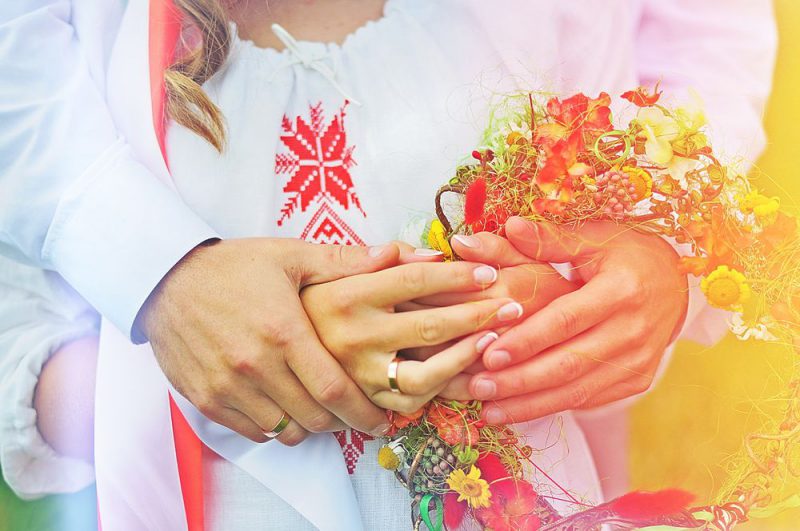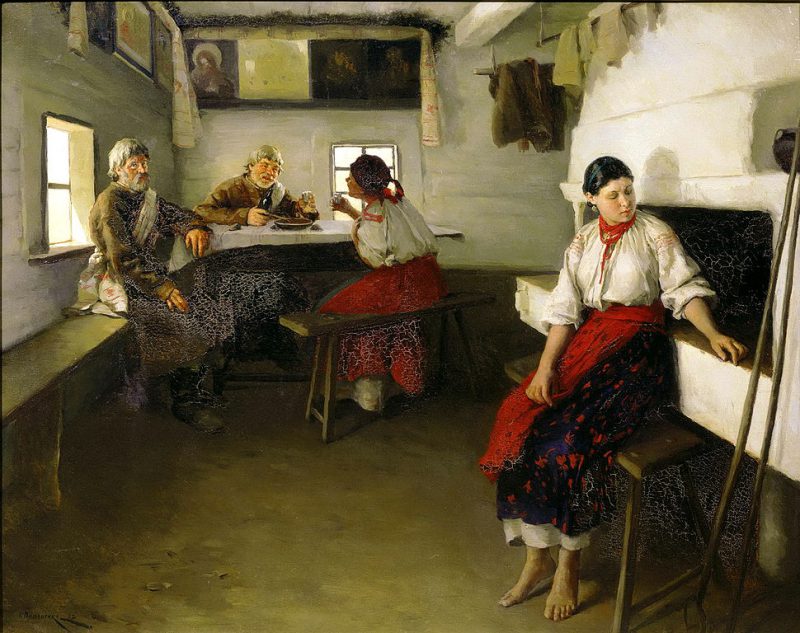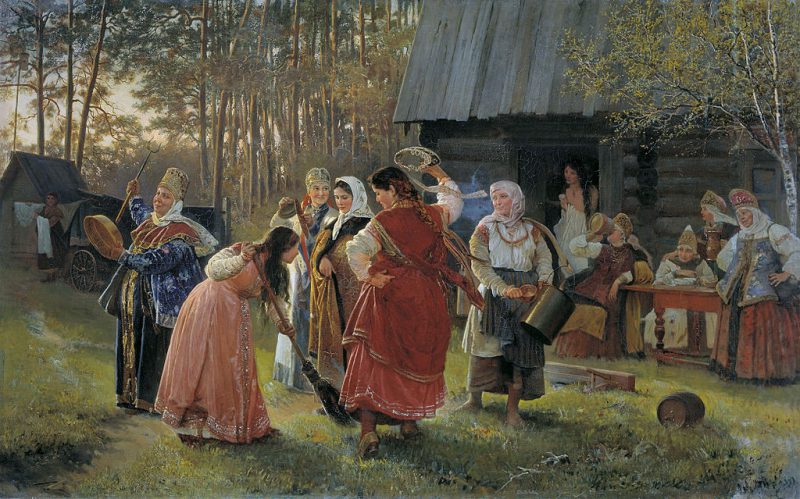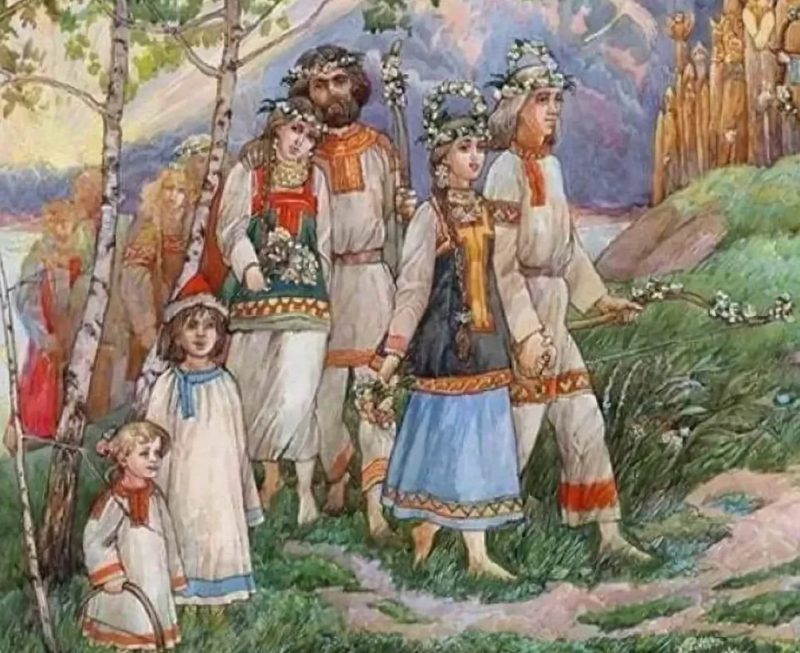Wedding traditions of Slavs
Today we start a new series of articles dedicated to Russian wedding traditions. Each of the articles will tell you how the population of Russia (starting from ancient Slavs) were getting married in different historical periods. Today’s story is about weddings in Russia before Peter the Great (until the 17th century).

The wedding has always been and remains one of the main events in the life of almost every person. Unfortunately, we know very little about the wedding rituals of the Slavic tribes. The most famous source on that is the annals of the Christian priest Nestor called “The Tale of Bygone Years” written in the 12th century.
Russia in the 12th century was not a single state but a large formation made of numerous small principalities, thus wedding traditions varied from a principality to a principality, from tribe to tribe.
In his annals, Nestor mentioned that Slavs practiced the so-called “abduction” (the groom abducted the bride during merrymaking having previously agreed with her). Polygamy, although practiced, was generally rare.
In the 14-15 centuries, when the state united around Moscow, the wedding ceremony became more uniform, and remained unchanged until Peter the Great came to power.
Back then, people used to get married very early: for girls this age was 12-13 years old, and boys could get married starting from 14-15 years old. Such early marriages were justified by the short life expectancy and the need to have as many children as possible. If a woman died during childbirth, the man could marry again.
The wedding process was divided in several stages: matchmaking, viewing, “hands-shaking”, a bachelorette party, wedding ceremony, festivities and feasts. Each stage included many ritual actions of the bride, groom, bridesmaids, groomsmen, future mother-in-law and other participants, as well as ritual songs and various formal procedures. The rites symbolized the transition of the girl from the father’s clan to the husband’s clan. The bride was supposed to symbolically “die” for her own family (the withering and lamentation was a part of the tradition) and to “be born” in another family.
Matchmaking
Matchmaking was the first stage, previously agreed upon by the parents of both families. The representative of the groom’s family went to meet the potential bride and her family. Often the matchmaking was accompanied by some ritual text, for example: “You have a flower, and we have a little garden. Is it possible for us to transplant your flower into our little garden?” There was many variations of such ritual texts.

At this stage, the parents of the bride must decline the offer, even if they were happy to marry their daughter. The matchmaker had to persuade them. Often, the matchmakers were hired by the parents of the groom, but sometimes the relatives of the groom acted as such. Their duties included not only the matchmaking itself, but also often the choice of the bride from suitable candidates. They should have found out what dowry is given for the bride and what it consists of. In addition, through the matchmaker, the groom learned details about the appearance and character of the bride, which in some cases he could see for the first time openly only on the wedding day. The bride’s consent was usually not asked.
Viewing
If the matchmaking phase was successful, the time came for the viewing. The future bride was taken to the center of the room and asked to walk and move, for example, remove the scarf from her head, raise her hands. The movements of the girl were closely watched by the matchmakers and the groom who evaluated her physical condition. In the end, the groom was supposed to make the decision whether he liked the girl or not. If he drank a glass of honey brought to him by his potential wife, this indicated that he agreed to marry her. Untouched glass meant the opposite.
After this, the viewing continued in the groom’s house, where the girl’s parents assessed his wealth and household, thereby deciding whether to marry their daughter or not. Parents paid attention not only to the size of the house and household, but also to the presence of dishes or fabrics in the house. If wealth seemed scarce to them, the groom was refused.
“Hand-shaking”
In case when both parties were satisfied with each other, the so-called “hand-shaking” stage came to place: the wedding was officially announced, preparations for the festivities began, witnesses were appointed. It was also stipulated who will be the head of this festivity, what gifts will be given, etc.
The term “hands-shaking” came from a symbolic shaking of the hands of the fathers of the bride and groom, which meant that there was no turning back, and the wedding would take place.
Wedding preparations
The following weeks were broken down into stages. For example, the bride had to cry and howl a lot which was supposed to drive away evil spirits from her future family. A special moment in a woman’s life was a bachelorette party, when the girl’s girlfriends first untied the bride’s braid and took the red ribbon woven into her hair (the red ribbon symbolized the girl’s youth and beauty), and then weaved her braid again but this time with a string decorated with pearls which was a symbol of the new married life. After that, the braid was undone again, and the pearl string was given to an unmarried girlfriend of the bride or her younger sister, so that she would also get married sooner.

Wedding day
On the very day of the wedding, the groom was supposed to arrive at his bride’s house in a cart decorated with bells. The iridescent ringing was to scare away evil spirits. Also, the ground from the porch of the bride’s house to the cart was swept so that not a single stone (obstacle) would come in the way of future spouses. After that, the young couple was taken to church where they were married.
After the wedding, the young couple went to the groom’s house, where they were met by their parents and blessed with bread. Having received the blessing, the couple had to go to the wife’s house to receive wedding gifts with which they returned back to the husband’s house. Upon their return, a cheerful and large feast began, which could last up to three days. At the end of the feast, a new life began for both the girl and the young man.

Conclusion
We told you about the wedding rituals of the Slavs in the Middle Ages. As we noted at the beginning of this article, the wedding ritual has changed over time. Particularly large changes in the organization of weddings and in the arrangement of personal life occurred under Peter the Great who brought changes to all spheres of life.
How did people get married after Peter? You will learn about this in our next article!

Culturologist, professor of Russian as a foreign language and promoter of Russian culture.
Aleksandra gives Russian lessons via Skype.






